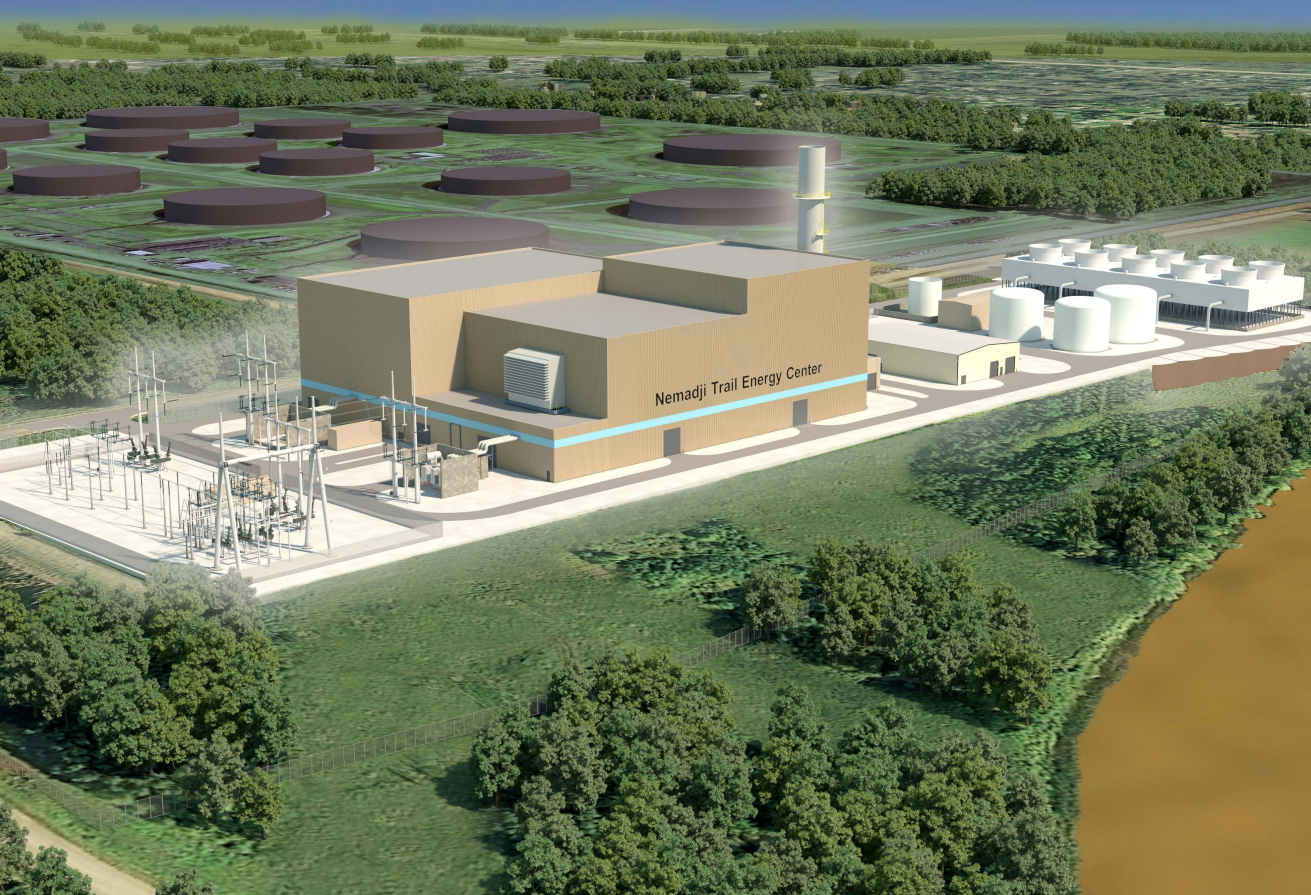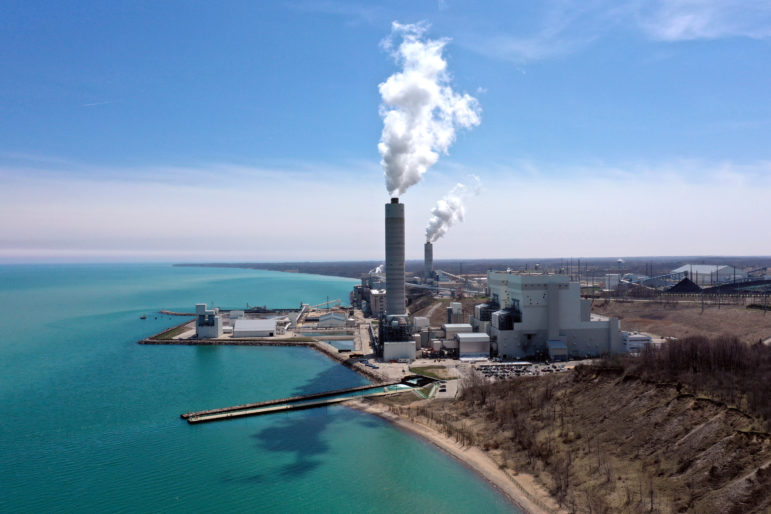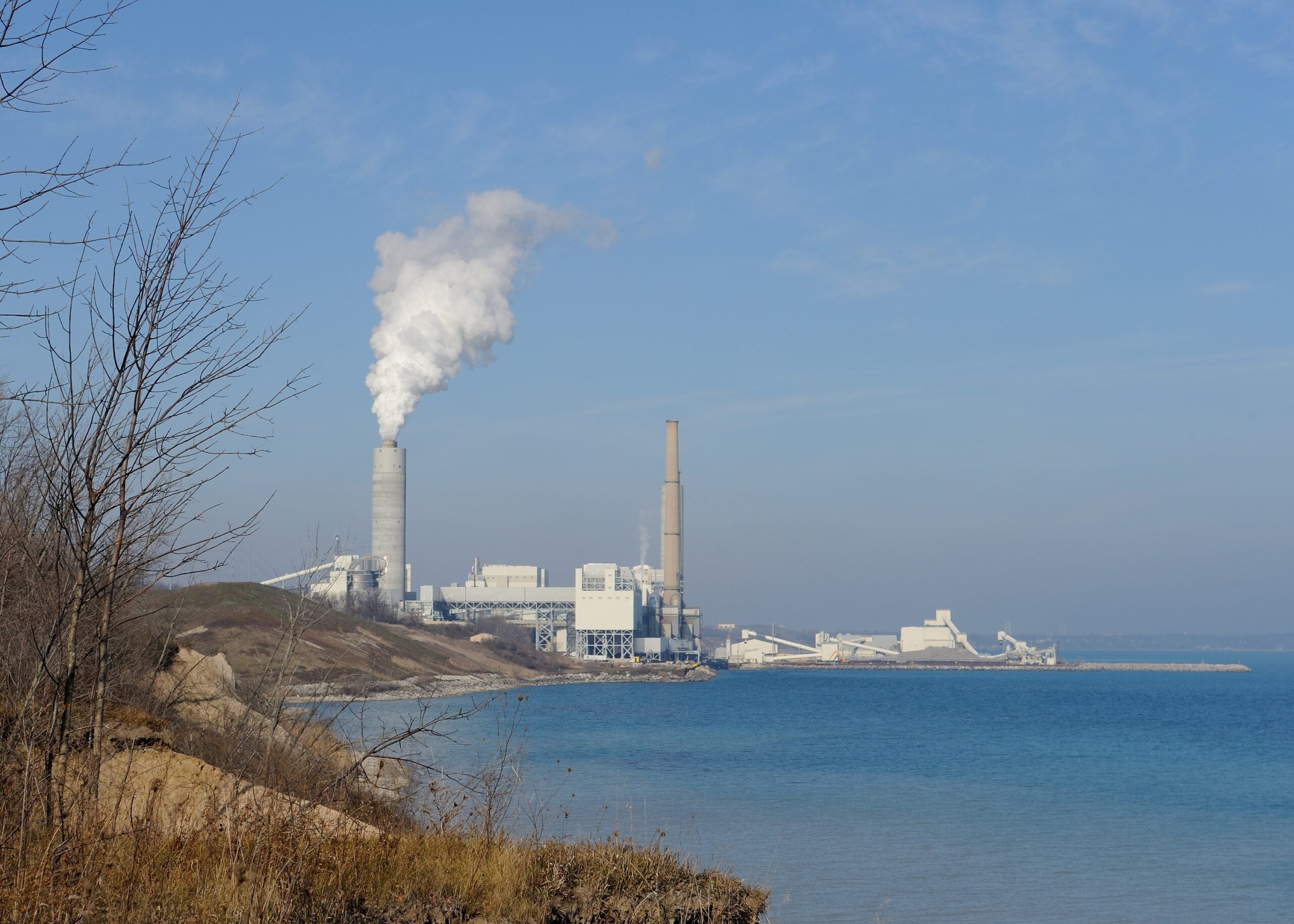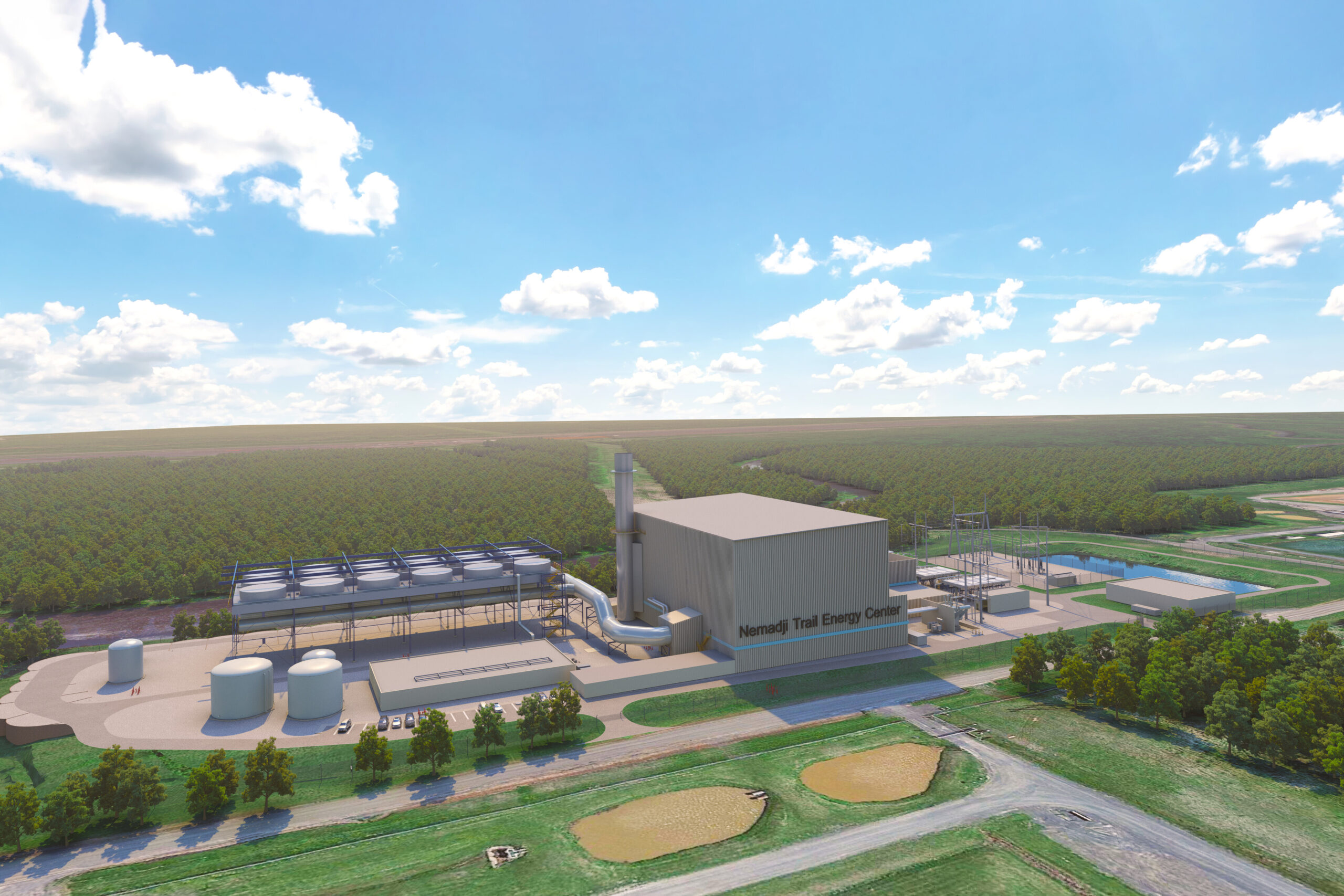The U.S. Environmental Protection Agency says a supplemental environmental assessment for a proposed $700 million gas plant in Superior failed to fully review the project’s potential impact on climate change and greenhouse gas emissions.
Federal environmental regulators claim the planned Nemadji Trail Energy Center, or NTEC, could — if built — cause around $2 billion in climate damages from greenhouse gas emissions through 2040.
The 625-megawatt gas plant would be built along the Nemadji River in Superior by La Crosse-based Dairyland Power, Duluth-based Minnesota Power, and a subsidiary of a North Dakota utility. Dairyland Power plans to seek a loan from the Rural Utilities Service within the U.S. Department of Agriculture to help pay for the plant as utilities retire coal plants and shift to renewable energy.
Stay informed on the latest news
Sign up for WPR’s email newsletter.
Last year, four organizations, including Clean Wisconsin and the Sierra Club, petitioned the Rural Utilities Service to conduct a supplemental environmental assessment of the plant. They argued the agency didn’t fully evaluate climate impacts as part of an environmental review of the project. That review found the plant would have no significant environmental impact.
The supplemental analysis released in June estimated the project would give off 2.7 million tons of carbon emissions each year. However, regulators said the plant would reduce emissions by about 964,000 tons annually because it would displace coal plants and require less frequent firing.
But, the EPA said the additional review “does not fully quantify or adequately disclose” the effects of greenhouse gas emissions. The agency is recommending the Rural Utilities Service analyze upstream, construction-related and indirect emissions from the project.
“Federal agencies have a legal obligation to consider direct and indirect impacts including upstream and downstream emissions caused by production, processing, transportation, and consumption of the project’s resources,” wrote EPA staff in a July 26 letter.
The Rural Utilities Service said in its supplement review that specific sources of natural gas transported for the project are unknown and may change.
“Due to this, the environmental impacts of upstream natural gas production are not reasonably foreseeable to predict with any specificity,” the analysis states.
The EPA disputes the agency’s findings. A spokesperson with USDA Rural Development said the agency is reviewing EPA’s comments.
Environmental groups praised federal environmental regulators for their recommendations, saying it demonstrates support for the Biden administration’s climate goals.
“The time for moving away from fossil fuels is now. It’s probably yesterday, so this project shouldn’t move forward,” said Katie Nekola, attorney for Clean Wisconsin. “If USDA’s (Rural Utilities Service) is going to invest in energy, it should be investing in clean energy — not carbon emitting sources.”
Elizabeth Ward, director of Sierra Club’s chapter in Wisconsin, said environmental advocates want utilities to cancel plans to build the plant. She said the pending $369 billion climate deal reached with West Virginia Sen. Joe Manchin includes a plan to reduce methane emissions.
“I think that just adds to the sort of growing awareness about how bad gas and methane pollution is and how we won’t be able to properly address climate change if we don’t do something about it,” said Ward.
In its comments, the EPA further alleges that the plant didn’t analyze potential measures to reduce the effects of carbon emissions through alternate fuels like hydrogen or the use of carbon capture technology. Federal environmental regulators also say the supplemental assessment failed to properly account for the effects of climate change on the project, as well as its effects on Native American tribes and environmental justice.
The Red Cliff Band of Lake Superior Chippewa wants to see a more thorough review of the project’s direct and indirect effects, said Linda Nguyen, the tribe’s environmental director.
“Like upstream and downstream considerations of the point of extraction, where the fuel is being extracted from,” said Nguyen. “And, then also to consider climate change effects, specifically the 500-year-flood events, if those are happening more frequently, how are we going to prepare for that?”
Beyond that, the tribe would like to see the Rural Utilities Service consider potential impacts to the remains of ancestors from the Fond du Lac Band of Lake Superior Chippewa in Minnesota. In 1918, nearly 200 Ojibwe graves were removed from the burial grounds of Wisconsin Point in Superior on the western edge of Lake Superior. The remains were reburied at St. Francis Cemetery in Superior, which is located near the site of the proposed gas plant.
Red Cliff would also like to see the supplemental environmental assessment consider indirect effects on murdered and missing Indigenous women, who they say may be impacted by extraction and transportation of natural gas for the project.
Nguyen said the USDA has made limited outreach to the tribe about its concerns, adding there’s been virtually no consultation from other state and federal agencies permitting the project.
“It would make sense to us that the regulatory and permitting process takes a pause until meaningful and good faith consultation can occur,” said Noah Saperstein, the tribe’s environmental justice specialist.
In a statement, Dairyland Power said it has complied and will continue to follow requirements under state and federal permitting and environmental reviews.
“Dairyland is planning for more renewable resources as we work towards low-carbon goals. However, renewable additions also increase the grid’s need for flexible facilities that can provide reliable, quick-start generation—which will be NTEC’s specialty,” said Katie Thomson, a Dairyland Power spokesperson. “It will be a flexible, low-emitting and highly efficient natural gas facility that will provide on-demand generation and support the rapid expansion of renewable energy resources.”
Thomson added that Dairyland and its partners continue to evaluate technologies that would allow flexibility in the types of fuels used at the Superior gas plant.
The Midcontinent Independent System Operator has also submitted comments on the supplemental assessment, urging the Rural Utilities Service to consider the project’s value in ensuring reliability. The regional grid operator has said 15 states, including Wisconsin, could see an energy shortage of 2,600 megawatts next year.
“Given the changes to the generating fleet, and the potential shortfalls in generating capacity, it is imperative that reliable generating resources, like those in the NTEC Project, be recognized for the regional reliability value provided to the region’s customers,” said Kristina Tridico, an attorney for MISO in a July 25 letter.
The project’s owners are still reviewing the EPA’s comments and awaiting direction from the Rural Utilities Service, according to Julie Pierce, vice president of strategy and planning for Minnesota Power. But she stressed the need for the project hasn’t changed.
“We still are seeing a tremendous need on our grid, especially in what we’re seeing right now with very high scarce energy resources as the transformation is taking hold, to ensure that we can keep a reliable service available for everyone here in the region,” said Pierce.
The Rural Utilities Service is accepting public comments on the supplemental review until Aug. 23. An EPA spokesperson said they expect to provide comments on the final document.
The Nemadji Trail Energy Center has faced legal challenges in Minnesota and Wisconsin, some of which are still ongoing. The utilities had hoped to have the facility in service by 2025, but Pierce said that date will likely be pushed further out as they continue working through the permitting process.
Wisconsin Public Radio, © Copyright 2025, Board of Regents of the University of Wisconsin System and Wisconsin Educational Communications Board.




